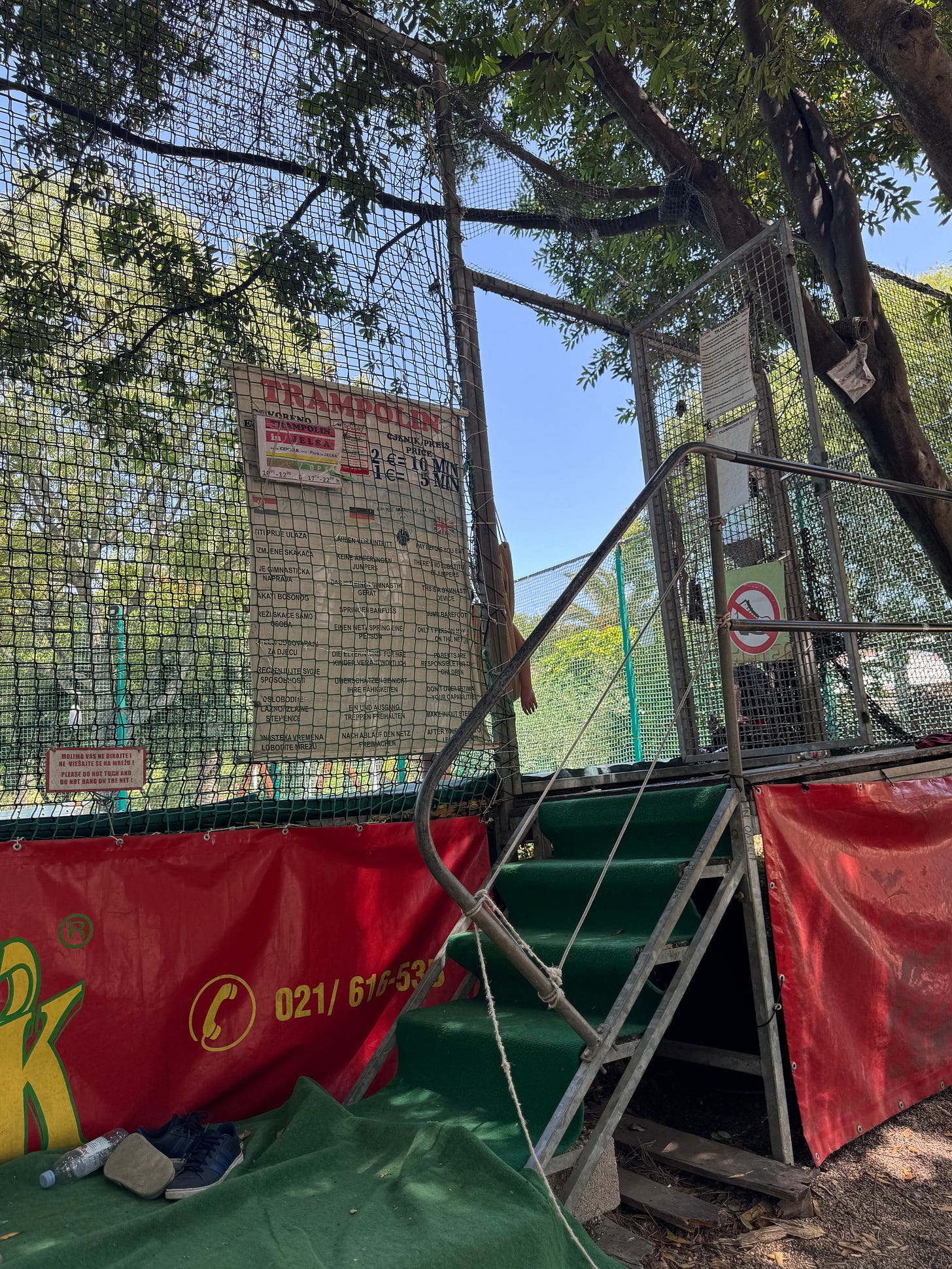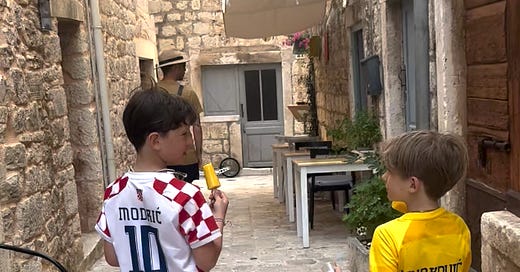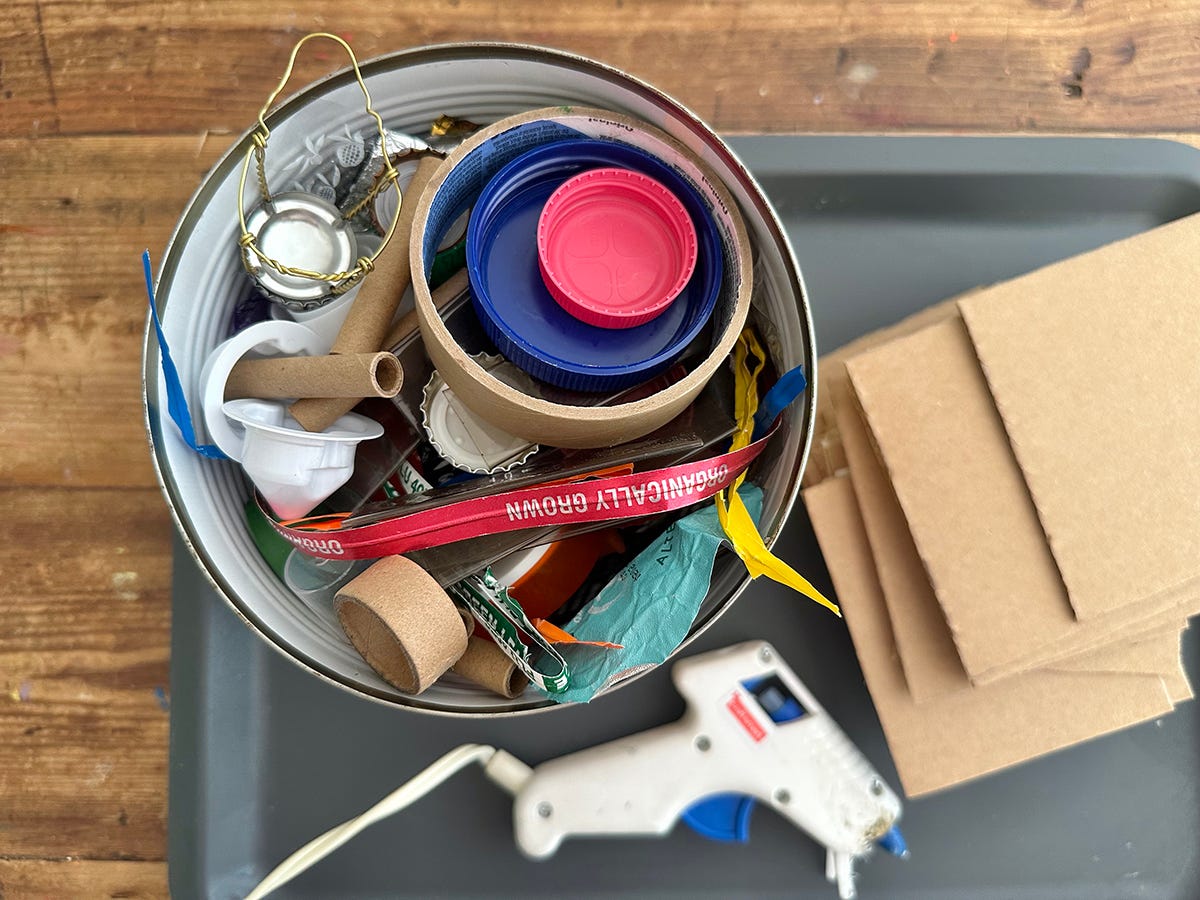When childhood freedom feels extinct, play is the antidote.
30 days of independence, agency, and the safety net of community.
I’m back home in Pittsburgh after a month on Hvar Island in Croatia and reflecting on what I noticed, wondered about, and the thoughts and ideas I wanted to bring home with me. My children spend 7 hours a day together with a rambling cohort of 7-13-year-olds and two amazing guides from The Field School of Hvar. The guides brought them to mountain peaks, hidden coves, and a restaurateur’s garden each day to harvest, prepare, eat, and clean up a meal together. They took boat rides, swam, and pushed the limits of their minds and bodies with nurturing adults who embraced their playfulness and grace. And when my children were not with their group, they were looking for their friends in town, scrounging up change for the public trampoline in the park, admiring the shell purveyors, and wandering through the narrow, cobblestone streets.

I was nervous about how my younger son would be on this trip. Cautious is his middle name, and I worried that his worry would prevent him from fully enjoying (see where he gets it?). It turns out that in an environment where he felt safe, connected, and seen by other children and adults, he was actually quite brave, relaxed, and open to trying new things. He was comfortable walking to and from our apartment with his brother or a friend. He put his face fully in the water so he could see the magic below. He playfully engaged some older girls in a game of dodgeball on the trampoline, undeterred by the language barrier. He shone in his creative capabilities and was celebrated for this way of being by the guides and peers alike.
It’s not lost on me that right now, especially in the United States, it is so rare for children to have opportunities to build this kind of confidence, to find this kind of flow, to cultivate real community in just 30 days. And we are incredibly privileged to have had the chance to experience all of it.
The real concerns many parents have in the US seemed to fade away the more I got to know the island. It helped that I was surrounded by parents with a similar level of trust in their own children. Many local adults who live on the island year-round told me there’s very little reason for anyone to commit a crime and that everyone is always looking out for the children who are independently traipsing around the park or village. It’s expected that kids will have some breathing room to free range. This is visible in the community and amongst the guides at The Field School. The trampoline operator wasn’t just collecting coins from the line of children; he knew the real mind-body benefits of that exhaustive, endless jumping. There was a trust in each other and in children that was life-giving.

Our local public school system in Pittsburgh lost funding to provide a safe and accessible summer program for children in the district this year, leaving no option for the most economically disadvantaged families who also have to go to jobs and who also can’t trust that their children won’t encounter violence if they just go outside to play. Another district paused a professional development opportunity on open-ended play in August due to a massive withholding of funds from the Department of Education, including 2.2 billion dollars toward professional development. Without an opportunity for educators to imagine and see what is possible when they prioritize play, belonging, and connection, and saddled with an endless list of duties, obligations, and objectives, they end up defaulting to sticking exactly to the script, relying heavily on apps and worksheets to keep children occupied, and holding children in classrooms with very little room to actually explore, to actually think.
The inequities of these hits on our education system and on the well-being of childhood are massive. Without these opportunities for unstructured play and confidence-building exploration, with nothing in place to support the care of children while parents go to work each day, and with mounting fears of consequences for allowing children some freedom, parents and children alike end up defaulting to the lowest hanging fruit — the screen babysitter. We’re not anti-screen, not at all, but we simply cannot ignore that our children’s access to safe, free play in schools and neighborhoods alike is a real problem. It is disrupting development, impacting focus, and preventing children from cultivating strong social relationships essential for health and well-being.
What does play mean to you?
There are, of course, ways we can each influence our own circumstances while we push for systemic and policy-level change. At home, we can put down our own phones for 10-15 minutes and draw or build with our kids. We can introduce them to what play looks like for us. For me, on this island, it’s working in my daily sketchbook that I mentioned in our Creativity on the Go post, collecting shells and broken pieces of tile, people watching, or rearranging.
What is play for you? Just knowing what play means to you can help so much in building this into your time at home.
What else can we do to ensure children have time to play?
We can work with our neighbors and communities to make it safer to send the kids outside to play, or ride their bikes (a classic childhood pastime that is fading).
We can ensure children actually have places to play.
We can advocate and support the professional development of educators in prioritizing play, as many of our children spend the majority of their childhood in the confines of a classroom or sleeping.
We can deepen our understanding of the value of play for big kids, especially in the classroom. This year, our 3rd grade partner teacher in Pittsburgh, Lacey Hohl, shared: “I feel like making space for play has helped them build better relationships amongst each other. Because you don't always get a chance to interact with as many people in class. You sit at your table, you sit at your desk. But in play, it's interesting to see kids interact. I think for me, as a math teacher as well, it has also allowed me to teach them about problem-solving just in everyday life. Now I'm like, can you figure that out? They’re just talking with each other, and I’m allowing them to problem solve on their own.”

Maybe, perhaps most importantly, we can trust that older children actually do crave free play and joyful, objective-less exploration. They’re less serious than we think, and their creative capabilities are not at all lost; they just need to be revived. One of my favorite moments from my professional collaboration with The Field School was on the very last day. Together with the guides, we hosted an open studio for the entire group, ages 3 to 13. The space is already well-resourced with Legos, books, and fort-building options. I set up some air-dry clay with watercolor, drawing, and small pieces of paper, beading and bracelet making, and nature/recyclables sculpture building.
Every single child found flow.
Some bounced from activity to activity in the space. The younger ones needed to move their bodies and invented games to meet the need. The older ones found deep satisfaction in using a hot glue gun to attach bits of shell, rock, and recyclables into elaborate and often funny sculptures. A mixed age group taught each other how to sculpt the clay. Yet others found space to quietly draw or bead a bracelet. Sometimes the kids relaxed or chatted. There was no pressure to perform. There was no objective except to make time and space for children to pursue and realize their ideas. And this lasted for 3 hours. As expected, the energy in the room shifted several times, but the trusting guides knew that even when it felt so tempting to stop, interrupt, or direct, it wasn’t necessary.
One Montessori-trained guide, Sarah, reminded me of the Montessori work cycle. She was right, the group found their way again.

Play is a revival of curiosity; we are never too old to play!
While we talk about play as carefree, open-ended, and joyful, it’s also an opportunity for bigger kids to practice personal and social responsibility, to learn to negotiate and respect others’ ideas and perspectives, and to cultivate a strong image of self. These are critical skills that need lots of time and repetition to develop. Whether it’s adventuring through the neighborhood, a jump on the trampoline, an elaborate sculpture built with a hot glue gun, or a new shell necklace business — play is a spark, it’s a door open to possibility, it’s the revival of curiosity. We are never too old to play, and we all need chances to do so. And just like any habit, the more you do it, the more we as adults set the conditions for it, the easier it becomes. Even a few minutes at a time is a win. A 10-year-old has not forgotten how to play, but we often make it challenging to do so, or even discourage it.
In the coming few weeks, right here, we’ll share more ways to gently encourage play in many different contexts and make it easier for big kids to find flow. Play is living, and every single one of our children deserves this. Play is a right, not a privilege.
The boilerplate:
Big kids desperately need opportunities to experience agency and autonomy and freedom to explore. It’s essential for their well-being.
The majority of children in the US spend most of their waking hours in structured school environments. It’s critical that educators get the professional development they need to prioritize play and creativity and that they have the support of administrators and policy makers to do so.
Lack of access to safe places to explore and free play is disrupting our children’s development, impacting mental health, and causing feelings of isolation. Humans need to play; it’s not a luxury.
Big kids need us to trust them, and we also need to trust that they will find their way in play if given the opportunity. It’s not always easy, but stick it out, and it will be so worth it.
It’s OK to not have a minute by minute itinerary. It’s OK to be bored. It’s OK to switch gears if the play is not serving. It’s OK to set boundaries and ensure big kids understand how to be accountable for resetting the space.
We, too, need to identify and model our play and playfulness. What brings us joy? Where can we find flow?
Set it up and see what happens
And now, a “set it up and see what happens” for you to try:
For one week, use a can or jar to collect lots of little bits. Bread tags, twistie ties, bottle tops, corks, cut-up egg cartons, whatever you have. Put the can or jar near a hot glue gun (low-temp if that makes you feel more comfortable) on a tray or a covered work surface. Provide some cardboard bases, too. Set it up for your bigger kid, and see what happens. If they’re not interested on day 1, just leave it out for a while. Offer it as an option when they say they’re bored. Try it yourself. We can almost guarantee that if you build it, they will come.





Play is a child's creative calling.
I loved reading about play for older kids. They too absolutely need that creative space and encouragement to move into that kind of free-flow art making. I look forward to hearing more about what works for the older age group.